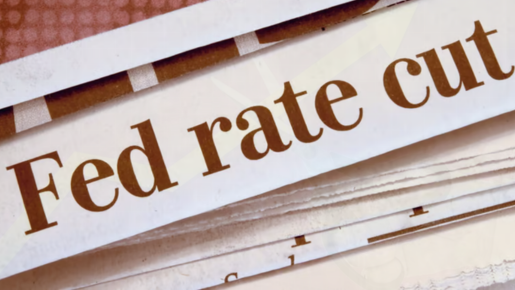The Federal Reserve has just cut Fed Cut Rates for the first time in over four years, a significant change that could impact many Americans’ finances. They lowered the benchmark rate by 0.50 percentage points, shifting gears after raising rates to control high inflation during the pandemic.
This Interest Rate reduction is beneficial to those with significant credit card debt, as well as those wishing to purchase vehicles or homes. It could also lead to more Interest Rates cut later this year and into 2025, which lowers costs for loans but also reduces the interest earnings for savers.
A financial expert, Sara Rathner, explained that the changes could help customers better manage their money and reduce borrowing costs. In general, it’s a reaction to the stress on finances that many have been experiencing as a result of inflation and rising rates.
How much of a rate cut was expected?
Prior to the Fed Cut Rates announcement on Wednesday, experts disagreed on the extent of the rate reduction. Some expected a more significant cut of 0.50 points, while a typical 0.25 percentage point reduction was by others.
At a press conference, Fed Chairman Jerome Powell stated that the need for a larger rate cut resulted from recent data that showed declining inflation and declining employment. He declared, “We’ve examined all the information and come to the conclusion that this is best for our economy and the people we serve.”
Powell noted that while this larger cut will help borrowers, as inflation gets closer to the Fed’s 2% target, its effects will be negligible.
According to Bankrate’s Greg McBride, one cut is not enough to address excessive borrowing costs. What matters most is the total impact of future Interest Rate reduction.
Will the Federal Reserve Interest Rate drop even more in 2024?
On Wednesday, the Fed shared its economic predictions, showing that officials expect the median Interest Rates Today for 2024 to be around 4.4%. This would be about a 1 percentage point drop from where it is now, according to financial data firm FactSet.
Economists surveyed by FactSet are predicting that the Fed will lower rates at meetings in November and December (there’s no meeting in October). Many analysts predict the Fed to continue to cut throughout 2025, with most predicting that by May 2025, the average Interest Rate will be between 3% and 3.5%.
Goldman Sachs analysts stated in a recent note that they expect three cuts of 0.25% in September, November, and December, leading to a final rate between 3.25% and 3.5%.
Impact of the Fed Interest Rate Decision on Mortgage Rates
Mortgage rates have been on the rise, peaking above 7% in 2023. This spike made it challenging for many people to afford homes, especially as prices kept climbing. Recently, though, mortgage rates have started to drop. As of now, the 30-year fixed-rate mortgage is around 6.29%, the lowest it’s been since February 2023.
With the Fed Interest Rate Decision on September 18, there’s hope for more cuts, which could lead to even lower mortgage rates. However, some experts, like Orphe Divounguy from Zillow, suggest that if the economy stays strong, we might not see a significant drop in rates even if the Fed interest rate goes down. Divounguy expects mortgage rates to stay roughly where they are now for the rest of the year.
Fed Chair Jerome Powell said it was hard to predict how the Fed’s decision would affect mortgage rates when questioned about it. He made the point that a variety of economic factors affect mortgage rates, such as consumer spending and job growth.
However, he thinks that other Interest Rates may drop if the economy keeps growing and the Fed lowers rates. For those who have been hesitant to purchase a home, this might be a good opportunity. Buyers may find better options as more homes become available and housing becomes more affordable.
Some homeowners with mortgages higher than 7% may wish to consider refinancing at a lower rate, according to experts. For example, a homeowner with a $400,000 mortgage may save $400 per month by refinancing into a loan at today’s rate of roughly 6.3%, compared to a high of about 7.8% in 2023. Generally, lenders suggest refinancing when there’s a difference of at least 1 percentage point.
Updates on Auto Loans, Credit Cards, and Other Debt Issues
Auto loan rates are expected to drop after the Fed cuts rates, which could encourage more people to buy cars. According to Edmunds, around 60% of car shoppers have been holding off due to high rates. Currently, the average annual percentage rate (APR) for new car loans is 7.1%, and 11.3% for used cars. Jessica Caldwell from Edmunds notes that while a Fed rate cut won’t bring all buyers back immediately, it may motivate some, especially with holiday sales coming up.
For credit cards, the average APR for new offers is now 24.92%, the highest since 2019. Similar to auto loans, credit card rates may decline, but this won’t significantly benefit those with existing balances. Experts suggest paying down debt or considering zero-percent balance transfer cards.
Impact of a Fed Rate Cut on Savings Accounts and CDs
With Federal Reserve Interest Rates rising recently, savers have enjoyed better returns on certificates of deposits (CDs) and high-interest savings accounts. Some banks have offered APYs as high as 5%, providing a great chance to grow savings.
However, this could change soon. Experts warn that as the Federal Interest Rate is cut, rates on savings accounts might drop. Some predict a decrease of up to 0.75 percentage points for top accounts.
There’s still an opportunity to benefit by moving funds from traditional savings to high-interest savings accounts, which can help build emergency funds. For CDs, it’s wise to lock in current rates quickly, as they are already falling and expected to decline further. Now might be the best time to act!


